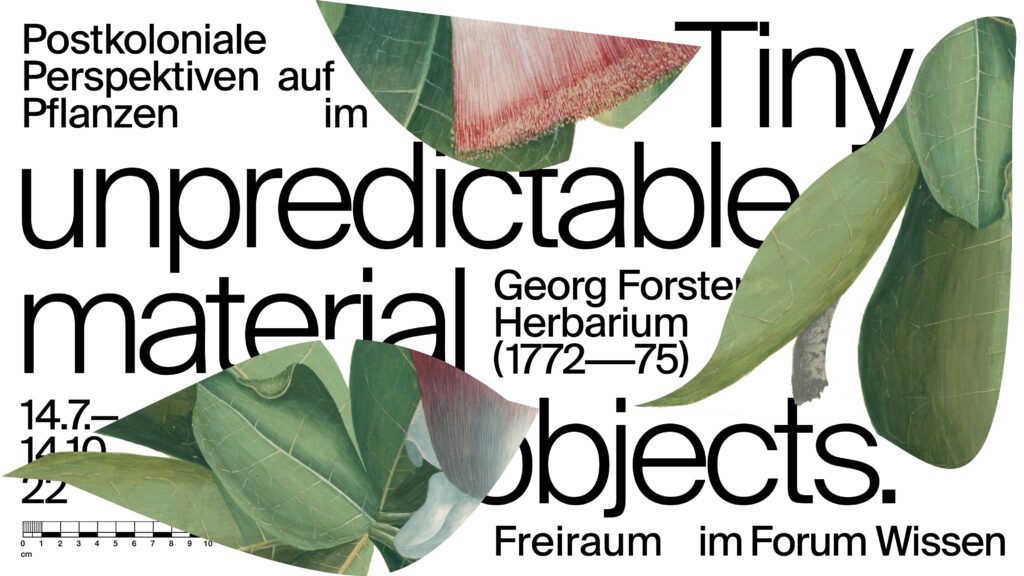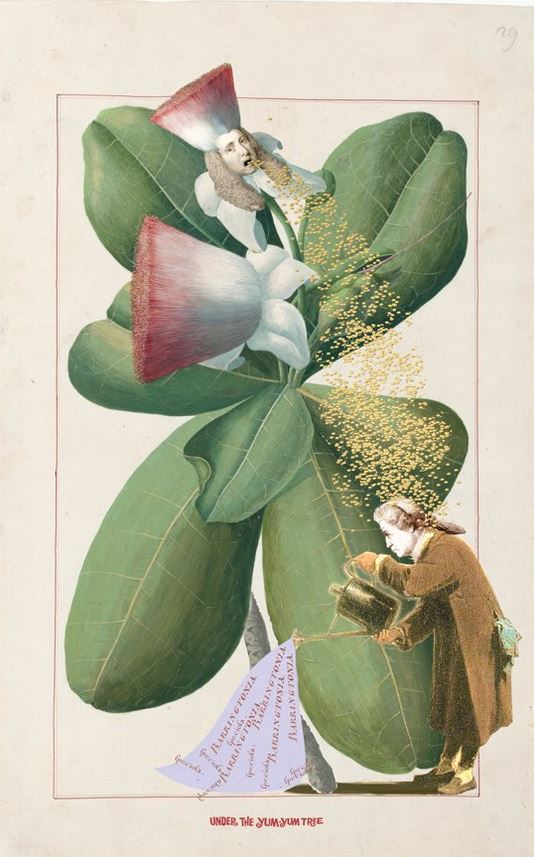Freiraum
13 July to 14 October 2022
The Georg Forster Herbarium at the University of Göttingen comprises South Pacific plants that had previously been known exclusively to botanists. They originate from James Cook’s second circumnavigation of the world (1772-1775), in which Georg Forster (1754-1794) who was only 17 years old at the time took part as a draftsman. Forster was not only a travel writer and cultural anthropologist, but also a naturalist and revolutionary. His botanical preparations, drawings, and publications follow the standards of botany, which became a science in the course of the 18th century. They refer to the ‘indigenous’ knowledge of Polynesian societies that was overwritten in the process. 250 years after the departure, the exhibition reflects on world voyages in the context of European expansion, colonial exploitation, and hegemonic knowledge production. And it connects to the activist protests against the expedition anniversaries in 2019.
The exhibition is the result of the project “Sammeln erforschen” (Collecting exploring) at the HTW Berlin University of Applied Sciences, in cooperation with the Central Custody of the University of Göttingen. The research project on which the exhibition is based was funded by VolkswagenStiftung (Volkswagen Foundation).

Graphic: arc studio for graphic matters | Georg Forster, Barringtonia speciosa (1776; call number: Forschungsbibliothek Gotha, Memb. I 131, Bl. 29)
Illustration from the Gotha Research Library of the University of Erfurt
Exhibition team:
Dr. Marie-Luisa Allemeyer [Director, Project Manager Forum Wissen]
Dr. Annabella Hüfler-Fick [VolkswagenStiftung]
Prof. Dr. Susan Kamel [Project Manager HTW Berlin]
Susanne Wernsing [Curator of the exhibition, HTW Berlin]
We would like to thank the Gotha Research Library of the University of Erfurt for the graphic of Georg Forster on which our poster design is based.
